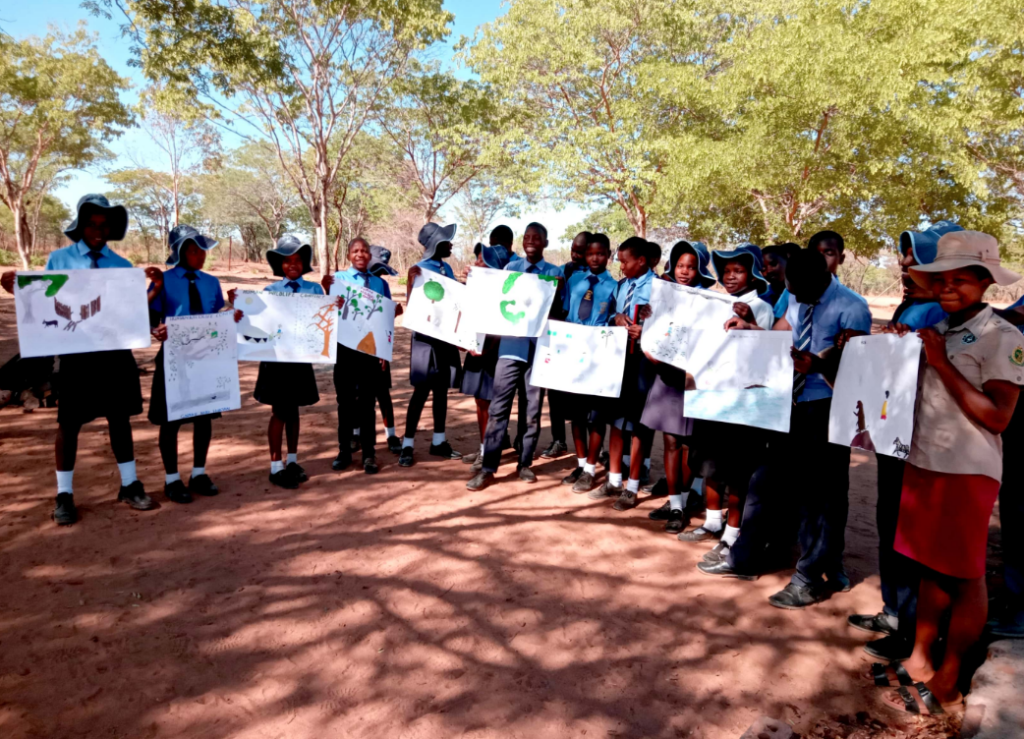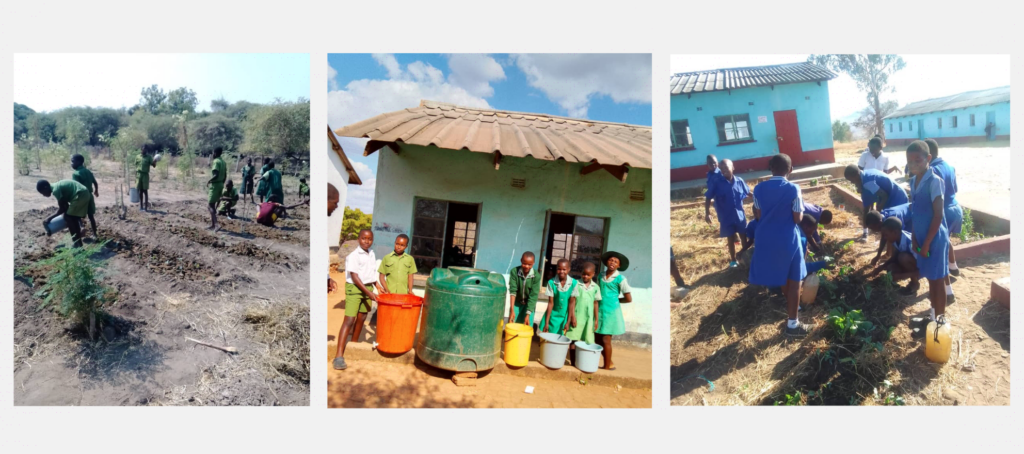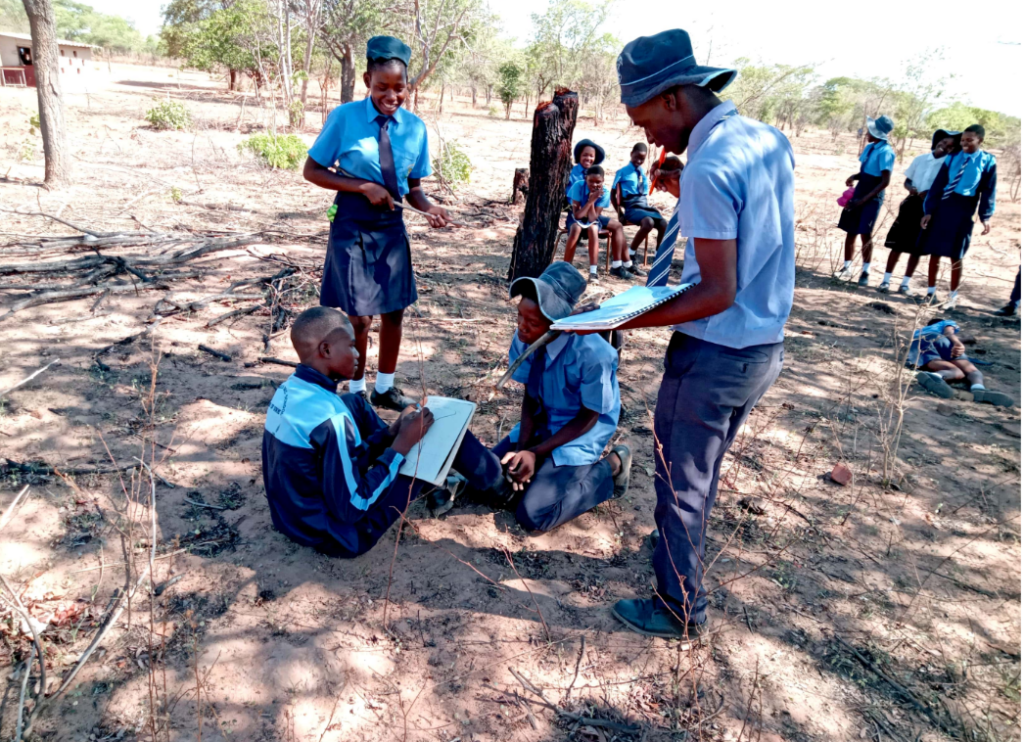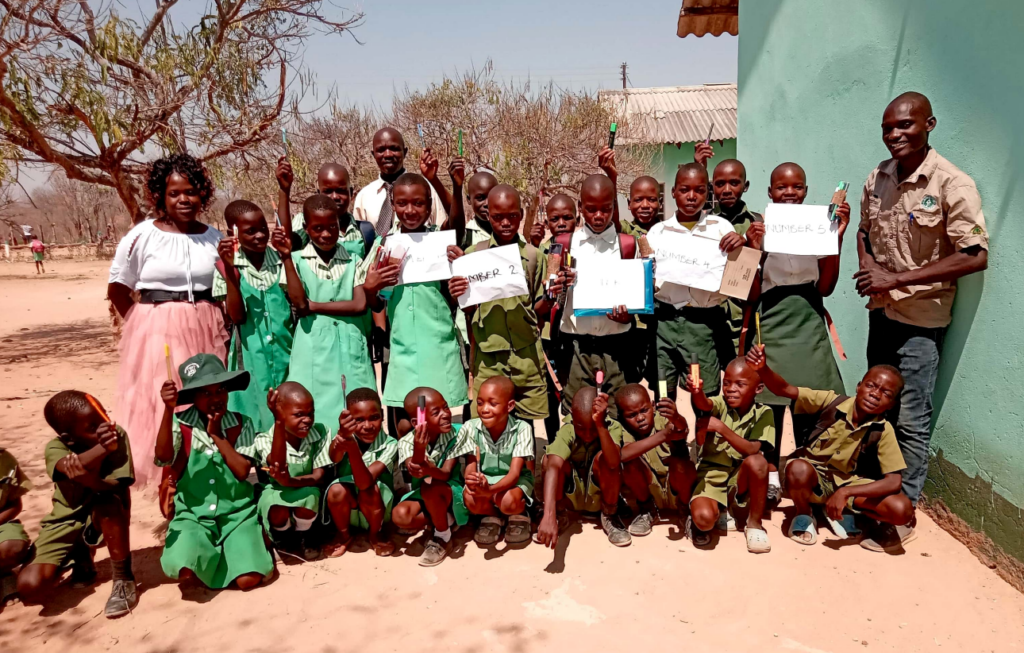
The Zambezi Valley Young Leaders Programme equips young people with the knowledge and skills to sustainably manage natural resources and mitigate human-wildlife conflict, the programme aims to empower future custodians of the region’s rich biodiversity.
The Zambezi Young Environmental Leaders Initiative is an ambitious programme, implemented in collaboration with key stakeholders such as the Zimbabwe Parks and Wildlife Management Authority (ZPWMA) the Environmental Management Agency (EMA), and Forestry Commission aimed to cultivate a generation of young environmental stewards dedicated to protecting Zimbabwe’s rich biodiversity.
________________________________________________________________________________________________________________
Expanding environmental education across the Zambezi Valley
Between 2022 – 2023, through the UNDP-funded Chengetai Programme and Utariri Integrated and Adaptive Biodiversity, Climate, and Livelihoods Project, subcontracted by DanChurchAid Zimbabwe and funded by SIDA, ZVCN established and strengthened 21 school-based environmental clubs in Mbire and Muzarabani districts. In 2024, the Matusadona Young Conservation Leaders Programme in partnership with Matusadona Conservation Trust (MCT) expanded to reach 15 schools in Nyaminyami district, directly impacting over 450 students. This partnership built on an existing programme initially launched by MCT in the district, contributing to the organisation’s wider community resilience building strategy in partnership with ZPWMA.
Achievements in numbers
-
- 36 schools across three districts participated.
- Over 1000 students were directly involved, with an even gender distribution.
- Club patrons: 33 trained in Nyaminyami and 21 in Mbire and Muzarabani.
- Practical conservation sites were established in all participating schools.
- Significant improvements in student knowledge, with quiz pass rates rising in most schools.
View our programme photo gallery
Nurturing young environmental stewards through a comprehensive curriculum
At the heart of ZVCN’s environmental education initiative is a comprehensive, hands-on curriculum tailored to engage and inspire rural school children aged 9 to 14. These young learners, hailing from remote communities, dispersed alongside protected wildlife areas, are often at the frontline of human-wildlife conflict amongst other challenges that threaten their livelihoods. The programme empowers young people with the knowledge, skills, and confidence to become active guardians of their environment and become resilient to challenges such as HWC and climate change, while educating them about wildlife protection.
The curriculum covers a wide range of critical conservation topics, designed not only to complement existing school subjects like Geography, Science, and Agriculture but also to offer practical, real-world applications. Key topics include:
-
- Wildlife Conservation & Crime Prevention: Understanding the importance of protecting wildlife, recognising the threats of poaching, and learning about laws and conventions that safeguard biodiversity.
- Human-Wildlife Conflict (HWC) Mitigation: Practical strategies for safely co-existing with wildlife, such as building chilli fences and adopting non-lethal deterrent methods.
- Climate Change Awareness & Preparedness: Exploring the effects of climate change on local ecosystems and communities, and identifying sustainable solutions for adaptation.
- Agroecology & Sustainable Agriculture: Promoting sustainable land management practices, including environmentally friendly farming practices that enhance soil health, conserve water, and boost food security.
- Water & Forest Conservation: Teaching the value of natural resources through activities like rainwater harvesting, tree planting, and forest protection initiatives.
- Protected Area Management & Indigenous Knowledge Systems: Highlighting the importance of national parks and traditional conservation practices in safeguarding natural heritage.
- Ecosystems and Biodiversity Protection: Including wetlands conservation and specially protected species.
- Bushcraft and Survival Skills

Club students plant trees, harvest water using available materials and learn how to create their own vegetable gardens
Hands-on learning and community impact
The programme prioritises experiential learning through practical activities like tree planting, water harvesting, and constructing chilli fences to deter wildlife from crops. Students have launched litter clean-up campaigns, developed sustainable gardens, and engaged in gully reclamation, showcasing their dedication to environmental improvement. Educational visits to national parks have been an important aspect of the programme in Nyaminyami, with visits to the Matusadona National Park enabling them to feel connected to the subject matter. Learning through art, drama, and poetry, is also a key learning approach, blending creativity with conservation advocacy. The students are able to learn and share their learnings through creative expression which further enriches their learning experience.

Students use roll play to showcase their learnings on illegal wildlife crimes. An important aspect of the programme is experiential and creative learning.
Overcoming challenges
While the programme achieved remarkable success, it faced several challenges. Severe drought conditions led to hunger, impacting school attendance and student motivation. Teachers balanced multiple commitments, and logistical barriers complicated regular monitoring in remote areas. In Mbire, political tensions during the 2023 elections further complicated programme implementation. However, through strategic adaptations—such as simplifying the curriculum, incentivising teachers, and integrating digital monitoring tools, ZVCN sustained its impact and continued to deliver meaningful results.
Stories of change
Beyond the numbers, the programme inspired transformative change within communities. Students began applying their newfound knowledge to real-world challenges, influencing their families and peers. In Mbire, one student recognised and questioned a parent’s involvement in bushmeat poaching, highlighting the programme’s impact. In Muzarabani, students proactively collaborated with the Forestry Commission to expand tree-planting initiatives, demonstrating leadership and environmental commitment.

The programme measures knowledge transfer through regular club quizzes against a baseline. The students are always proud of the improvements in their marks and a rewarded with prizes.
Looking ahead: A model for sustainable environmental education
With ongoing support of donors such as the Zambezi Elephant Fund and partners, ZVCN is aiming to strengthen and expand the programme in 2025. Plans for 2025 include hiring dedicated field officers to lead the clubs, providing enhanced teacher support, and introducing new educational materials, such as conservation-themed books and projectors for visual learning. ZVCN is also actively seeking funding to ensure the programme’s longevity and expand its reach to more schools across the Zambezi Valley.
ZVCN and its partners invite you to support this initiative by donating here, or getting in touch directly. For enquiries or more information please contact . ZVCN is available to share comprehensive reports as well as details on the structure and monitoring and evaluation framework of this programme.

